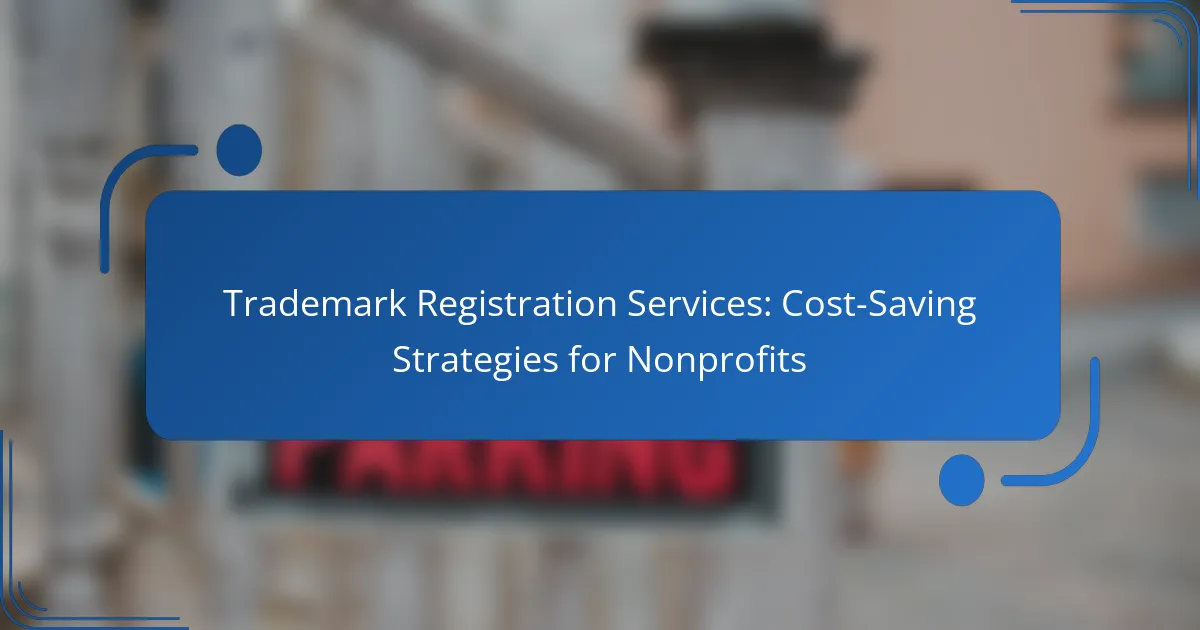Registering trademarks in international markets requires a thorough understanding of local regulations, trademark classes, and market entry strategies to ensure effective brand protection. Selecting the right trademark registration service is essential, as their expertise and client feedback can significantly influence your success. Familiarity with the varying steps involved in trademark registration across different countries is crucial for safeguarding your brand globally.
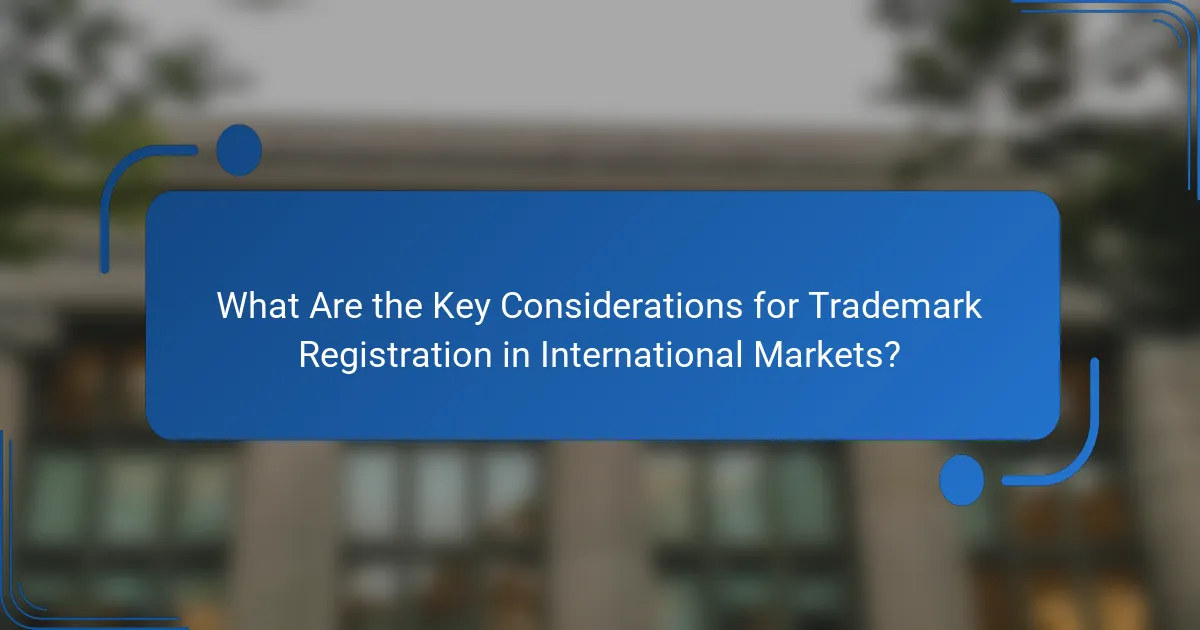
What Are the Key Considerations for Trademark Registration in International Markets?
When registering trademarks in international markets, it is crucial to understand local regulations, assess trademark classes, and evaluate potential market entry strategies. These factors can significantly impact the success and protection of your brand across different jurisdictions.
Understanding local laws
Each country has its own trademark laws and regulations, which can vary significantly. Familiarize yourself with the specific requirements for registration, including application processes, timelines, and any necessary documentation.
For instance, some countries may require proof of use or a declaration of intent to use the trademark, while others may have different criteria. Consulting with local legal experts can help navigate these complexities effectively.
Assessing trademark classes
Trademark classes categorize goods and services, and selecting the appropriate classes is essential for effective protection. The Nice Classification system is widely used, dividing products and services into 45 classes.
Consider the specific goods or services your brand will offer in each market. Registering in multiple classes may be necessary to ensure comprehensive protection, but it can also increase costs and complexity.
Evaluating market entry strategies
Your market entry strategy can influence trademark registration decisions. Whether you plan to enter through direct sales, partnerships, or franchising, understanding how your brand will be represented is vital.
For example, if you intend to license your trademark, ensure that the registration covers all potential uses in the target market. This foresight can prevent future legal disputes and enhance brand integrity.
Identifying potential conflicts
Before registering a trademark, conduct thorough searches to identify existing trademarks that may conflict with yours. This includes checking local databases and international registries.
Potential conflicts can lead to legal challenges, so it’s wise to address any issues before filing. Engaging a trademark attorney can help identify risks and advise on strategies to mitigate them.
Determining filing costs
Trademark registration costs can vary widely depending on the country and the number of classes you choose. Generally, expect to pay filing fees ranging from a few hundred to several thousand dollars.
In addition to filing fees, consider costs for legal assistance, translations, and potential opposition proceedings. Budgeting for these expenses upfront can help ensure a smoother registration process.
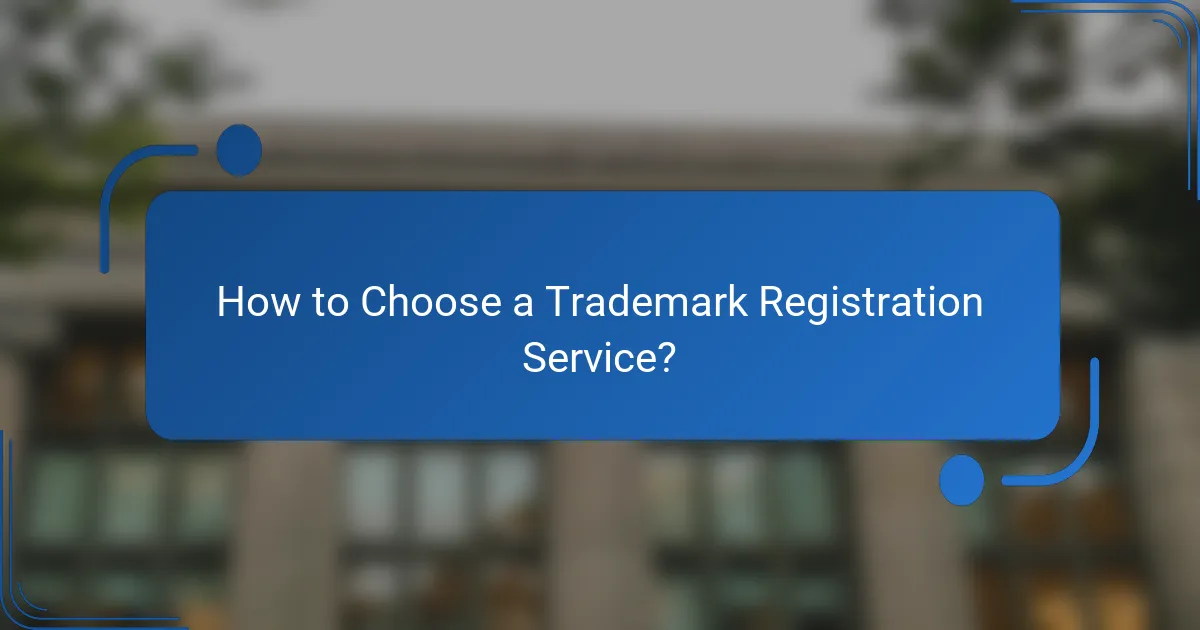
How to Choose a Trademark Registration Service?
Choosing a trademark registration service involves evaluating their expertise, offerings, and client feedback. A well-informed decision can save time and ensure effective protection of your brand in international markets.
Reputation and experience
When selecting a trademark registration service, consider their reputation and industry experience. Look for firms with a proven track record in handling international registrations, as they will be familiar with various jurisdictions and their specific requirements.
Check how long the service has been operating and whether they have successfully registered trademarks in the countries relevant to your business. A reputable service often has established relationships with local authorities, which can expedite the registration process.
Service offerings comparison
Different trademark registration services offer varying levels of support, from basic filing to comprehensive brand protection strategies. Assess whether the service provides additional features such as trademark monitoring, enforcement assistance, or legal advice.
For instance, some services may offer packages that include international filings, while others might focus solely on domestic registrations. Compare these offerings to ensure they align with your specific needs and goals.
Client reviews and testimonials
Client reviews and testimonials can provide valuable insights into the quality of service offered by a trademark registration provider. Look for feedback on their responsiveness, professionalism, and success rates in securing trademarks.
Websites like Trustpilot or Google Reviews can be useful for gathering unbiased opinions. Additionally, consider reaching out to past clients for direct recommendations, as personal experiences can highlight strengths or weaknesses not visible in online reviews.
Pricing structures
Pricing structures for trademark registration services can vary widely, so it’s essential to understand what you are paying for. Some services charge flat fees, while others may have variable costs based on the complexity of your application or the number of jurisdictions involved.
Request detailed quotes that outline all potential costs, including government fees and additional services. Be cautious of low-cost options that may skimp on essential services, leading to complications or delays in your trademark registration process.
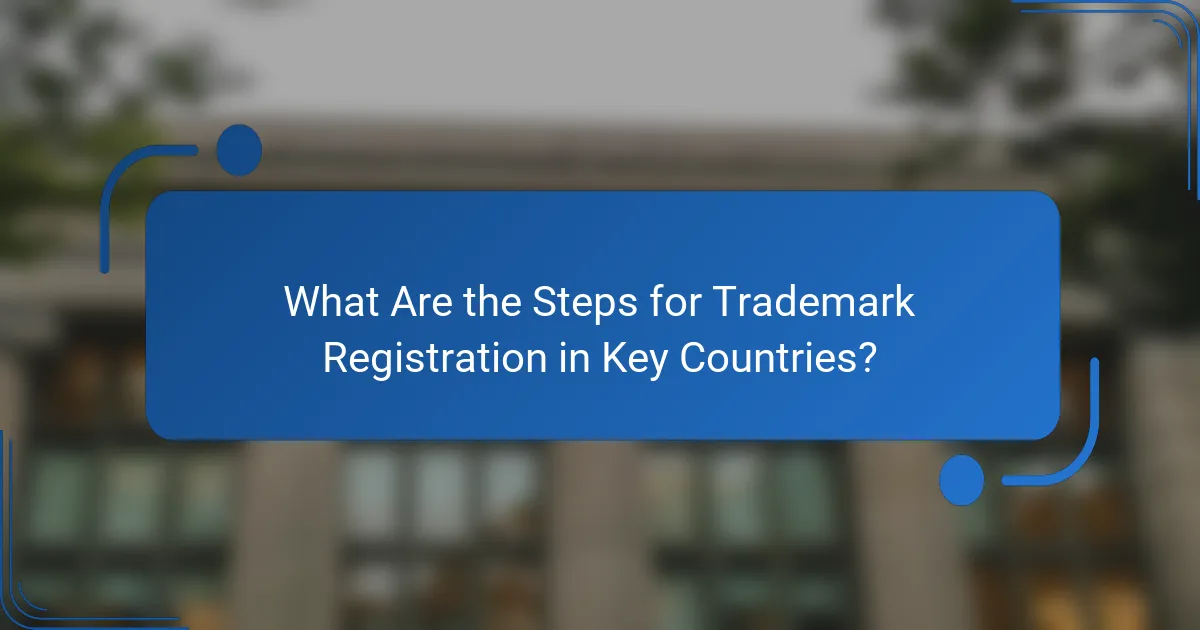
What Are the Steps for Trademark Registration in Key Countries?
Trademark registration involves several key steps that vary by country. Understanding these steps is crucial for protecting your brand internationally.
Filing in the European Union
To register a trademark in the European Union, you can apply through the European Union Intellectual Property Office (EUIPO). The process typically involves submitting an application that includes your trademark, the goods or services it covers, and paying a fee that starts around €850 for one class.
Consider conducting a trademark search before filing to ensure your mark does not conflict with existing registrations. The examination process usually takes about four months, after which your trademark will be published for opposition.
Filing in China
In China, trademark registration is managed by the China National Intellectual Property Administration (CNIPA). The application must include the trademark, a list of goods or services, and a fee starting at approximately CNY 300 per class.
Be aware that China follows a “first-to-file” system, meaning that securing your trademark promptly is essential. The review process can take around 9 months, and once approved, your trademark is valid for ten years, with the option to renew.
Filing in the United States
In the United States, the United States Patent and Trademark Office (USPTO) handles trademark registrations. Applicants must file a detailed application that includes the trademark, a description of the goods or services, and a filing fee starting at $250 per class.
It’s advisable to perform a comprehensive trademark search to avoid potential conflicts. The examination process typically lasts about 3 to 6 months, and if there are no objections, your trademark can be registered for ten years, with renewals available every decade.
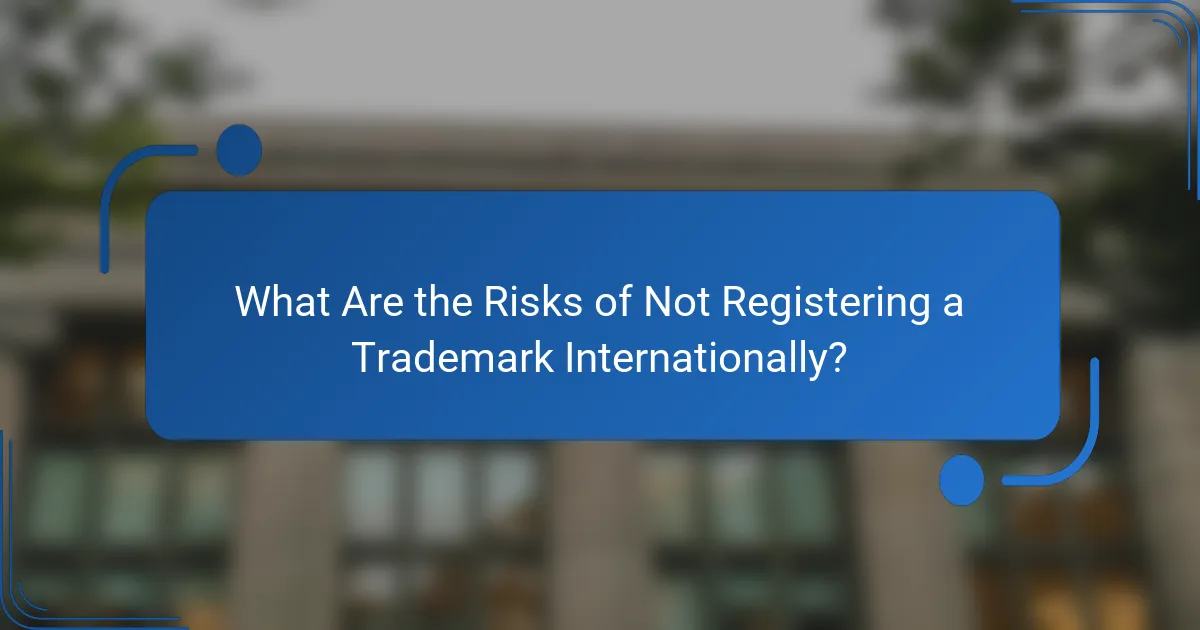
What Are the Risks of Not Registering a Trademark Internationally?
Failing to register a trademark internationally can lead to significant risks, including loss of brand identity and exposure to legal challenges. Without proper registration, businesses may find it difficult to protect their brand in foreign markets, leading to potential financial losses and reputational damage.
Loss of brand identity
Not registering a trademark internationally can result in the dilution of brand identity. Competitors may use similar names or logos, causing confusion among consumers and weakening brand recognition. This can undermine marketing efforts and lead to a loss of customer loyalty.
To maintain a strong brand identity, businesses should consider registering their trademarks in key international markets. This proactive approach helps secure exclusive rights and reinforces brand presence globally.
Legal disputes and litigation
Without international trademark registration, businesses are at a higher risk of facing legal disputes. Unauthorized use of a brand can lead to costly litigation, which may drain resources and distract from core business operations. Resolving such disputes can take months or even years, impacting overall business performance.
To mitigate these risks, companies should conduct thorough trademark searches and seek registration in jurisdictions where they plan to operate. This can help establish legal grounds for defending their brand against infringement.
Infringement on intellectual property
Infringement on intellectual property is a significant concern for businesses that do not register trademarks internationally. Unauthorized use of a trademark can lead to loss of market share and revenue, as competitors may capitalize on the brand’s reputation without incurring the associated costs.
To protect intellectual property, businesses should prioritize international trademark registration as part of their global strategy. This not only safeguards their brand but also enhances their ability to enforce rights against infringers in various jurisdictions.
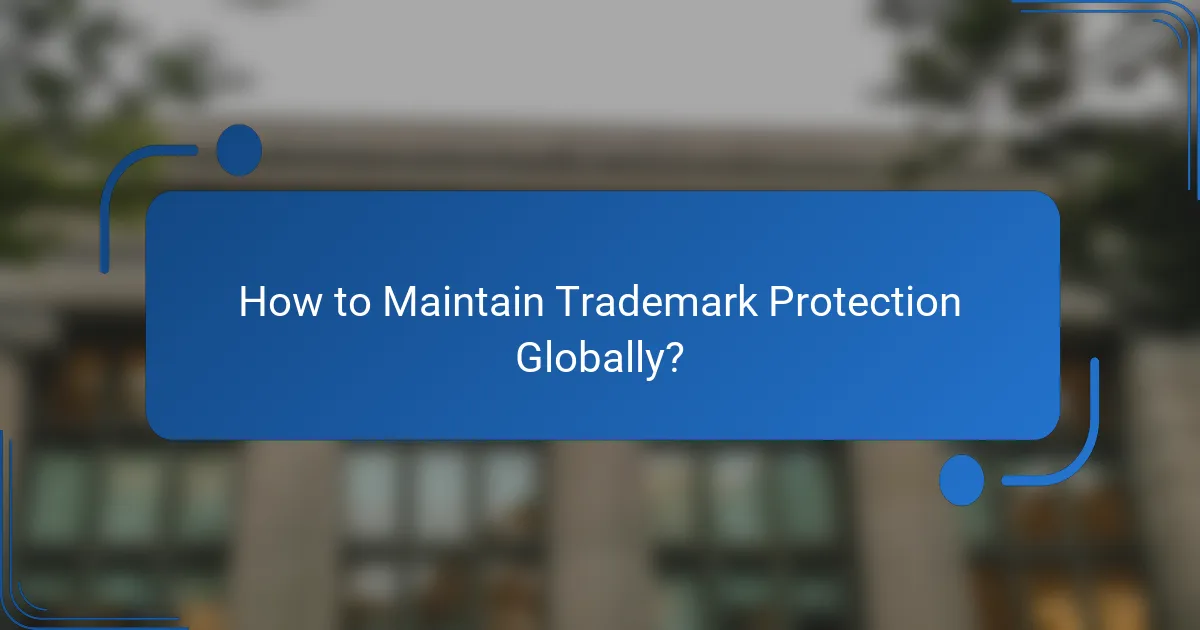
How to Maintain Trademark Protection Globally?
To maintain trademark protection globally, businesses must actively monitor their trademarks, adhere to renewal processes, and effectively respond to any infringements. These steps are crucial for ensuring that trademarks remain valid and enforceable across different jurisdictions.
Monitoring trademark use
Monitoring trademark use involves regularly checking that your trademark is being used correctly and is not being infringed upon. This can include watching for unauthorized use in the market or on digital platforms.
Consider setting up alerts for your trademark name and variations, and utilize trademark watch services that can notify you of potential infringements. Regular audits of your brand’s presence can help identify misuse early.
Renewal processes
Trademark registrations typically require renewal at set intervals, which can vary by country. In the European Union, for example, trademarks must be renewed every ten years, while in the United States, they require maintenance filings between the fifth and sixth years after registration.
Be aware of the specific renewal timelines and fees in each jurisdiction where your trademark is registered. Setting reminders well in advance can prevent lapses in protection.
Responding to infringements
When you identify an infringement, prompt action is essential. Start by documenting the infringement and assessing its impact on your brand. This may involve gathering evidence of the unauthorized use.
Next, consider sending a cease-and-desist letter to the infringing party. If the issue is not resolved, you may need to escalate the matter through legal channels, which can vary in complexity and cost depending on the jurisdiction.
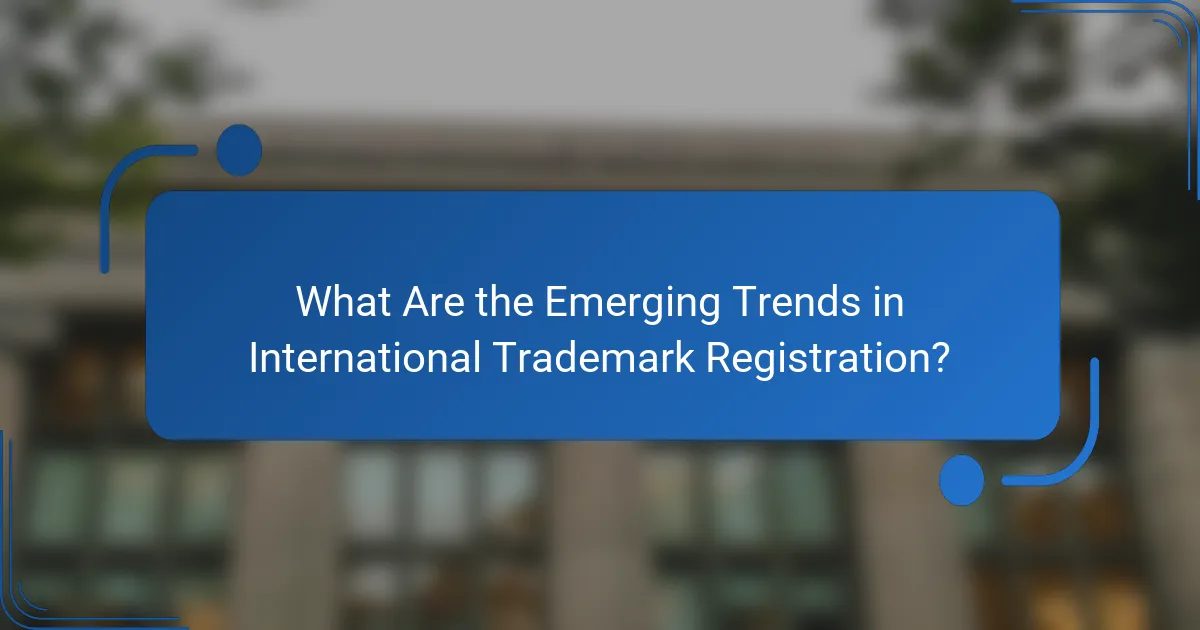
What Are the Emerging Trends in International Trademark Registration?
Emerging trends in international trademark registration reflect the evolving landscape of global commerce and digital innovation. Businesses are increasingly prioritizing comprehensive strategies that address cross-border protections, digital trademarks, and sustainability considerations.
Increased Focus on Digital Trademarks
As e-commerce continues to grow, the registration of digital trademarks is becoming essential. Companies are now seeking to protect their online identities, including domain names and social media handles, as these are critical to their branding and customer engagement strategies.
Global platforms like the EU Intellectual Property Office (EUIPO) are adapting their processes to accommodate these digital assets. Businesses should consider registering trademarks in multiple jurisdictions to safeguard their online presence effectively.
Emphasis on Sustainability and Ethical Branding
More brands are aligning their trademark strategies with sustainability and ethical practices. This trend is driven by consumer demand for transparency and accountability in business operations. Companies are increasingly using trademarks to signify their commitment to eco-friendly practices.
When registering trademarks, businesses should consider how their branding reflects these values. This may involve incorporating sustainability-related terms or symbols that resonate with target audiences, enhancing brand loyalty.
Regional Trade Agreements and Trademark Harmonization
Regional trade agreements are influencing trademark registration processes by promoting harmonization across member countries. Initiatives like the African Continental Free Trade Area (AfCFTA) aim to simplify trademark registration, making it easier for businesses to operate across borders.
Companies should stay informed about these agreements and leverage them to streamline their trademark applications. Understanding local regulations and requirements can significantly reduce costs and time associated with international registrations.



